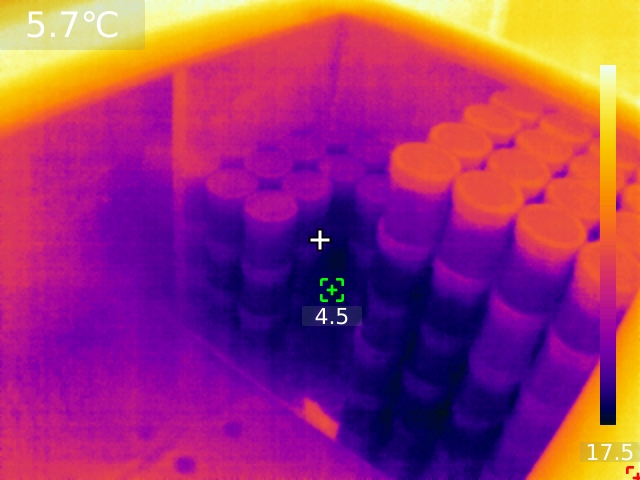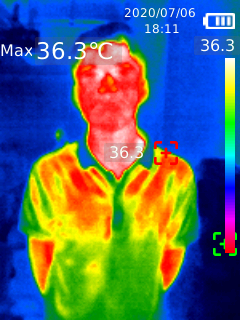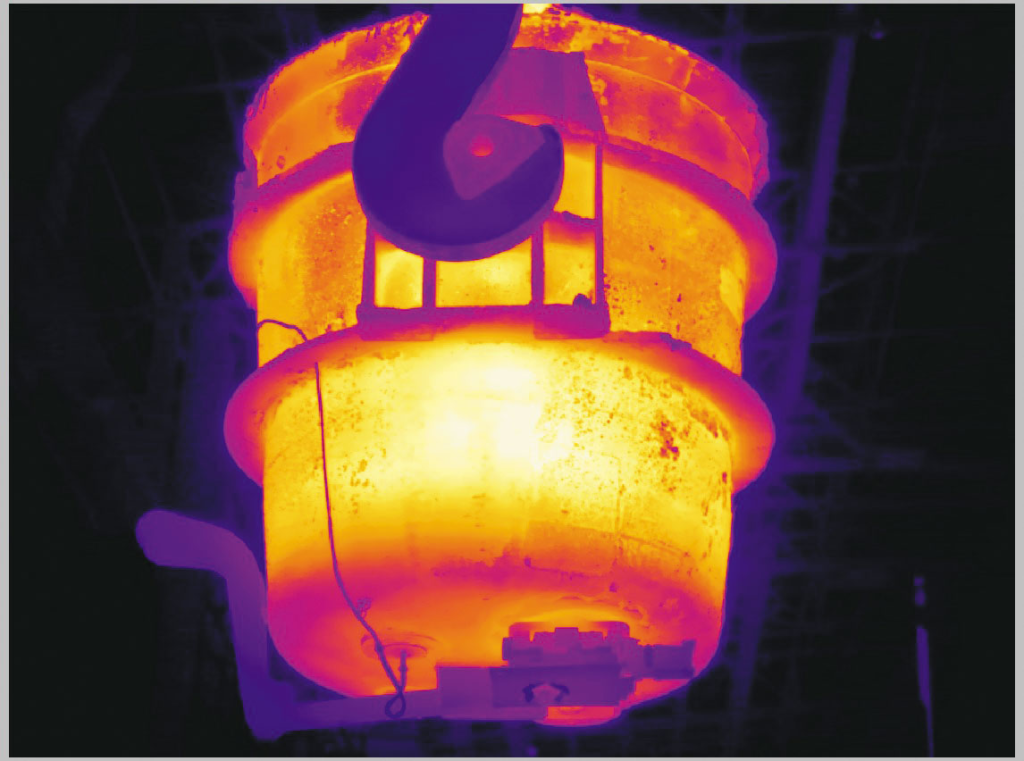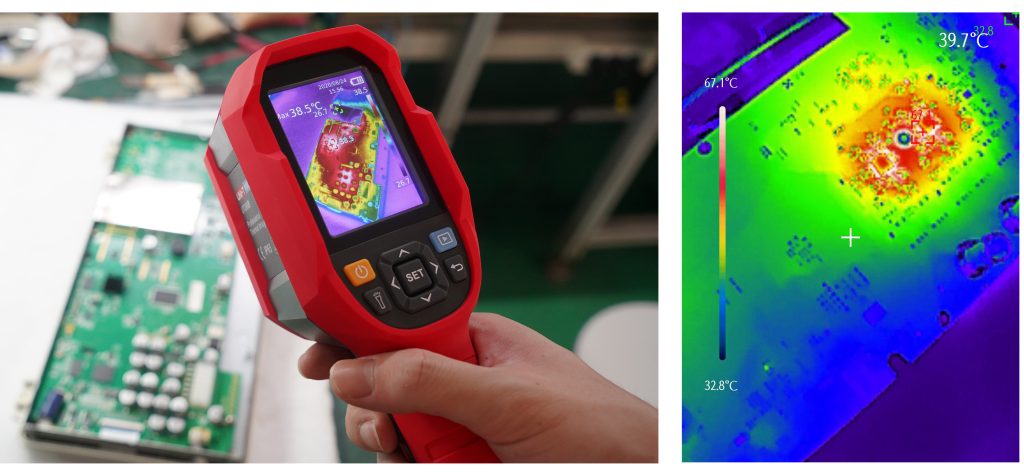Introduction
In today’s fast-paced world, thermal imaging technology has become an indispensable tool for numerous industries. By visualizing temperature variations, thermal cameras offer a unique perspective that can help you identify potential issues, optimize processes, and improve overall efficiency. This article will explore the benefits of thermal imaging and guide you through the key factors to consider when selecting the right thermal camera for your specific needs.

The Advantages of Thermal Imaging
- Non-Contact Measurement: Thermal cameras allow you to measure temperatures remotely, eliminating the need for physical contact and reducing the risk of damage to delicate equipment.
- Data storage & Connectivity: The traditional devices can only support the retention of the last measurement data and doesn’t support data transmission neither. On the contrary, thermal imager supports internal and external storage expansion, allows data to be stored in batches. Moreover, data can be transmitted to other devices through Wi-Fi or wired connection, which is convenient for viewing & analyzing data.
- Wide range of uses: Thermal imager has wide temperature measurement range, which meets temperature measurement needs in human body & industry. Users can choose the applicable device according to the actual situation.
- Enhanced Problem Solving: Quickly pinpoint the root cause of problems, such as electrical faults, mechanical failures, or energy inefficiencies.
- Improved Safety: Detect potential fire hazards, overheating equipment, and other safety risks.
- Increased Productivity: Intuitively show thermal images with temperature data by just aiming the device at the targets. More importantly, thermal imager supports surface measurement (multi-point measurement), which streamline inspections and maintenance processes, saving time and resources.
Key Specifications to Consider When Choosing a Thermal Camera
When purchasing infrared thermal imager, we generally compare various specifications. Each specification has different effects on the performance of the product in different aspects, and a single specification cannot objectively reflect the product performance. When selecting a thermal camera, consider the following key specifications:
● Thermal Sensitivity (NETD):
NETD, or Noise Equivalent Temperature Difference, is a crucial metric for thermal imaging cameras. It measures the smallest temperature difference the camera can detect. The lower the NETD, the more sensitive the camera is to temperature variations.
For example, a NETD of 60mK means the camera can detect a temperature difference of 0.06°C. This sensitivity is crucial for applications like:
1. Precise temperature measurement: Detecting subtle temperature changes in electronic components or building materials.
2. Identifying energy loss: Pinpointing areas of heat loss in buildings and industrial facilities.
3. Monitoring temperature-sensitive processes: Ensuring optimal conditions in manufacturing and laboratory settings. While a lower NETD is generally better, it’s important to balance sensitivity with other factors like image resolution, field of view, and cost. For applications that don’t require extreme precision, a higher NETD camera might be sufficient.
● IR Resolution:
Infrared resolution is a critical specification that determines the clarity and detail of thermal images. It refers to the number of individual detector elements on the camera’s sensor. A higher resolution means more pixels, resulting in sharper images and better ability to discern small temperature differences.
Why is IR Resolution Important?
1. Image Clarity: Higher resolution provides clearer and more detailed images, making it easier to identify potential issues.
2. Temperature Measurement Accuracy: More pixels allow for more precise temperature measurements, especially in areas with significant temperature gradients.
3. Smaller Target Detection: Higher resolution enables the detection of smaller objects and finer details.
Choosing the Right Resolution:
The optimal resolution depends on your specific application and budget.
* Lower Resolution (e.g., 120×90, 160×120): Suitable for general-purpose applications and shorter distances.
* Higher Resolution (e.g., 384×288, 640×480): Ideal for detailed inspections, research, and professional applications.

● Temperature Range:
The temperature range of a thermal imager determines the breadth of applications it can handle. A wider temperature range allows for more versatile use, from measuring low temperatures in cold environments to high temperatures in industrial settings.



● Field of View (FOV):
Field of view indicates the angle of the scene range that the thermal imager supports to visualize, and the size of FOV is directly determined by the lens. With the same resolution, the larger the FOV, the wider the range of observable objects, but the more blurred the imaging. The smaller the FOV, the narrower the observation angle and the farther the observation distance. Choose a camera with an appropriate FOV to capture the desired area.

● Frame Rate:
A higher frame rate allows for smoother video capture and real-time analysis.
● Additional Features:
Consider features like laser pointers, image mode, and thermal imager with Wi-Fi connectivity for added convenience.
Conclusion
By understanding the benefits of thermal imaging and considering the key specifications, you can select the right thermal camera to meet your specific needs. Whether you’re a professional technician, a home inspector, or a DIY enthusiast, a thermal camera can be a valuable tool to enhance your work and improve your decision-making.

Explore our range of thermal cameras:
- Handheld Thermal Cameras 26 products
- Smartphone Thermal Cameras 6 products
- EST Thermal Cameras 4 products
- Thermal Imaging Monoculars 8 products
- Discontinued Products 9 products
- Accessories 5 products
- Acoustic Imaging Cameras 2 products
 Meters
Meters Global
Global